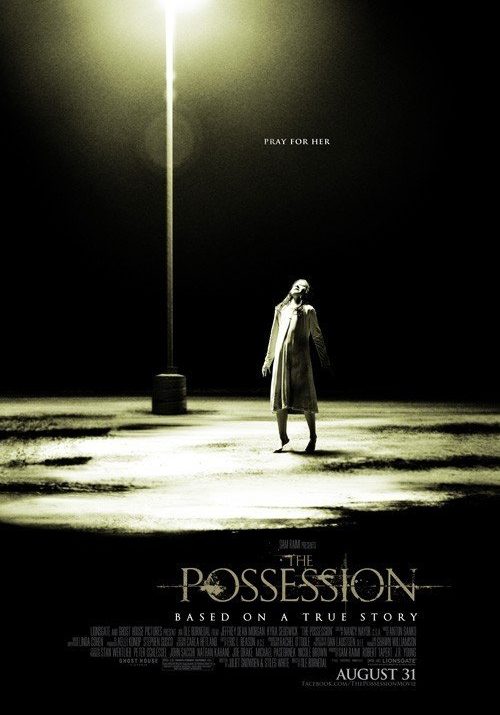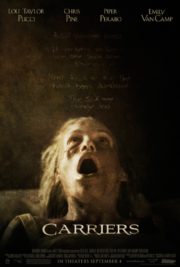Unboxing Evil: “The Possession’s” Pandora’s Box of Terrors
“They say when you exorcise a demon, it’s important to find out its name. Know your enemy.”
In the landscape of horror cinematography, The Possession, directed by Ole Bornedal and produced by Sam Raimi, stands as a curious artifact from the year 2012. The film weaves its narrative using the trope of a haunted object, in this case, a mysterious antique wooden box containing a malevolent spirit, bought at a yard sale. And so, the stage is set for a tale of supernatural intrigue, following a young girl, Em, whose behavior grows increasingly bizarre after acquiring the box, leading her father, Clyde, and her family down a harrowing path of dark discovery.
Piercing the Veil of Darkness
The atmosphere of horror within The Possession is a meticulously constructed tapestry. Bornedal employs a subtle art, using a palette of shadows and dimly lit scenes to infuse a sense of foreboding. The audience can almost feel the miasma of dread permeating each scene, an invisible presence that coldly brushes against their skin. The film eschews the blood-soaked spectacles of its contemporaries for an eerie stillness. This eerie calm is punctuated by sudden shocks—the film’s horror crescendos not with a bang, but with a shiver down the spine.
Cinematography within the film plays a significant role in creating an immersive experience. The camera acts almost as an unseen character, its angles and movements injecting suspense into the simplest of scenes. The visuals are not about grandiosity; rather, they are about intimacy—close-ups that capture the terror in a character’s eyes and the lurking danger of the supernatural force. Lighting and color achieve an otherworldly feel, a sepia-toned view into a family’s nightmare.
An analysis of the film’s soundtrack reveals a layered approach to horror. At times, the film uses a haunting silence to accentuate the terror, while at others, a sudden orchestra of sounds exacerbates the tension. Yet, it’s the subtle use of sound effects—creaking wood, whispering voices—that truly augments the eerie atmosphere.
The Human Heart of Horror
Central to The Possession are the performances, the linchpin for any horror story’s believability. Jeffrey Dean Morgan and Kyra Sedgwick, as the girl’s estranged parents, display a complex range of emotions that resonate with the viewer, grounding the supernatural horror in the painfully real drama of a fractured family. It is young Natasha Calis, however, who stands out with her portrayal of Em, capturing both innocence and malevolence in a deeply disturbing dual performance. Her transformation is the spine of the film’s terror, an unsettling metamorphosis that propels the story forward.
The film employs supernatural horror, delving into Jewish folklore with the notion of a dybbuk—a malicious possessing spirit. In doing so, it both honors and modernizes the tradition, placing ancient fears in a contemporary setting. This demon isn’t merely a force of evil; it is a manifestation of unspoken family tensions, a clever combination of psychological and paranormal horror that forces the audience to confront the idea that sometimes the demons are within us all.
Fear Wrapped in Story: The Lure of “The Possession”
The Possession uses a blend of jump scares, psychological terror, and creeping dread to unnerve its audience. The film excels most when it slithers into the psyche, invoking the fear of the unseen, the unknown that lies within the box. Though it may not redefine the genre, it executes classic horror techniques with enough finesse to leave a lasting impression.
Underlying the supernatural chills is a poignant theme of familial bonds strained to breaking by unforeseen forces. The film taps into real-world horrors—divorce, custody battles, and the loss of innocence. It’s these real human elements that amplify the supernatural ones, creating a film that is as touching as it is terrifying.
To its merit, The Possession is a horror movie that manages to spook without relying excessively on gore. It possesses a clever charm for those who appreciate a story-driven scare, one that will appeal to both seasoned aficionados and newcomers alike. However, those who favor high-octane gore or nonstop action might find the film’s slower, more deliberate pacing less satisfying.
In comparison to other pivotal works in the genre, The Possession could be set alongside films like The Exorcist or The Conjuring for its commitment to combining human drama with supernatural occurrences. However, it may not quite reach those classics’ iconic status.
Concluding Nightmares: Is “The Possession” The Film for You?
Ultimately, The Possession serves as an intriguing entry in the horror canon. It captures the essence of what makes the genre compelling—a dance with the unknown that is both frightening and fascinating. The film’s strengths lie in its haunting tone, solid performances, and a story that intertwines the supernatural with the painfully real. Its primary weakness could be seen in its adherence to genre conventions, potentially offering few surprises for the seasoned horror enthusiast.
This film comes with a caveat: its depiction of spiritual warfare and haunting may be unsettling for sensitive viewers. Still, for those intrigued by the blend of psychological and supernatural horror centered around a rich narrative, The Possession is likely a worthy watch.
In the end, it’s the viewer’s own taste for terror that will determine whether The Possession unlocks their fears or simply opens a curious but forgettable chapter in their cinematic experiences.




